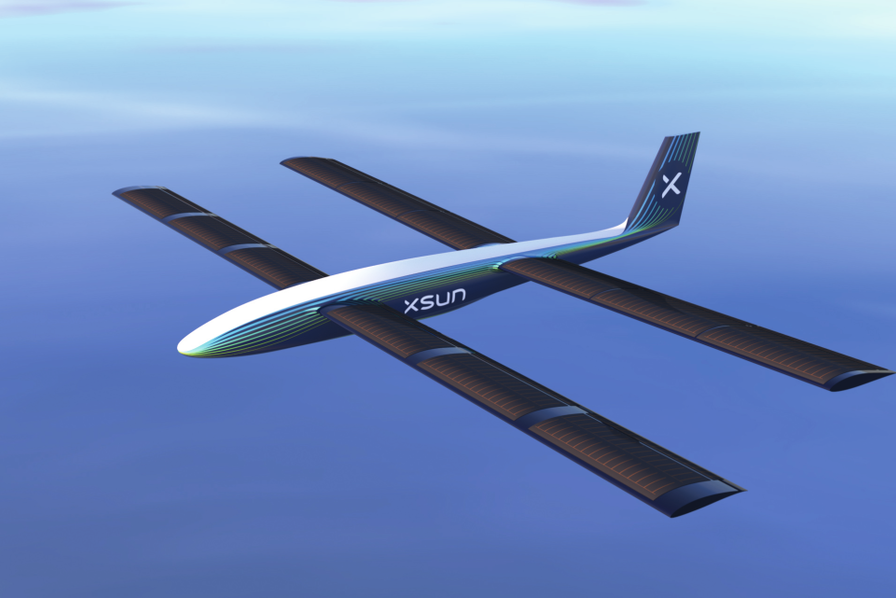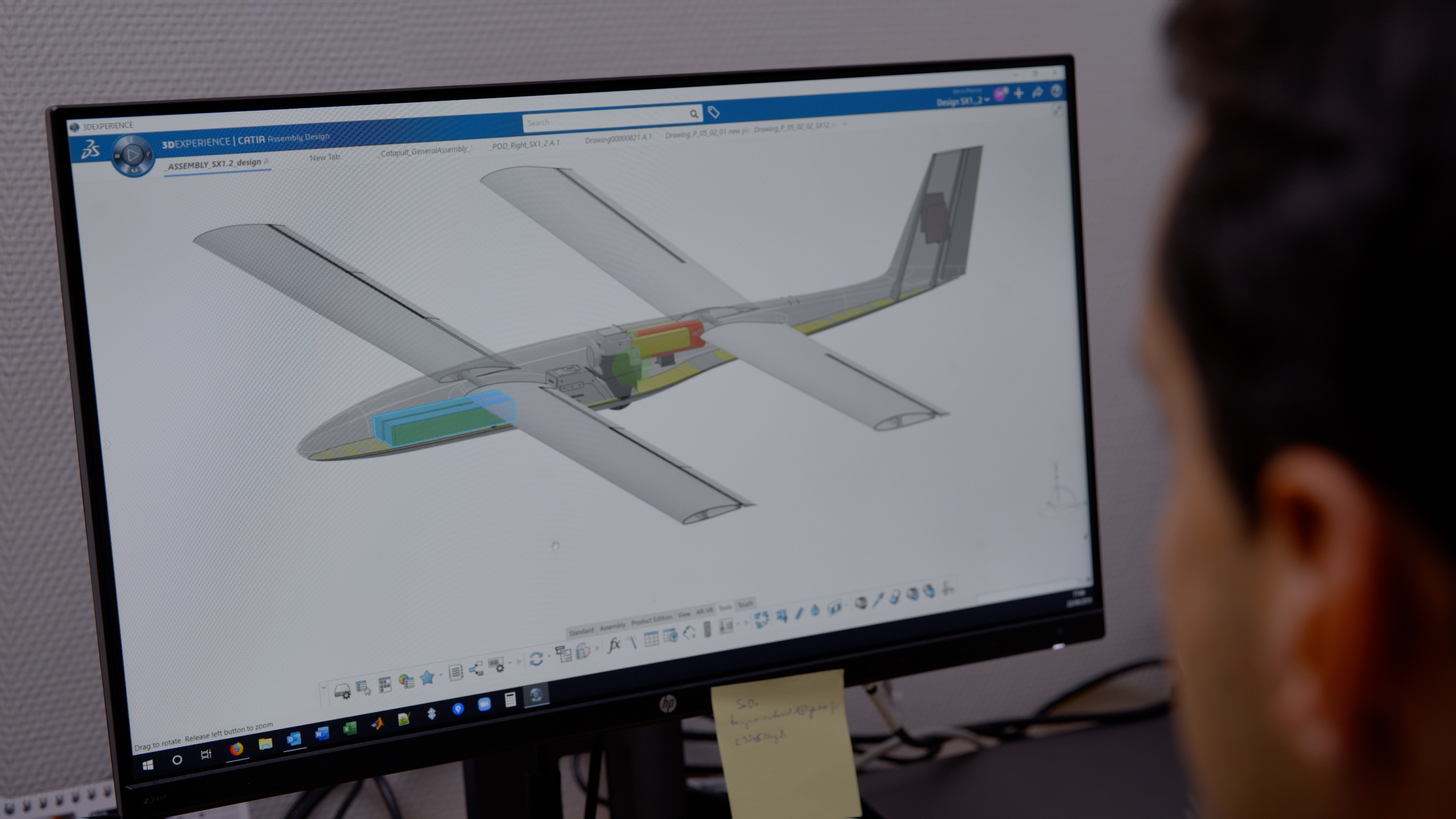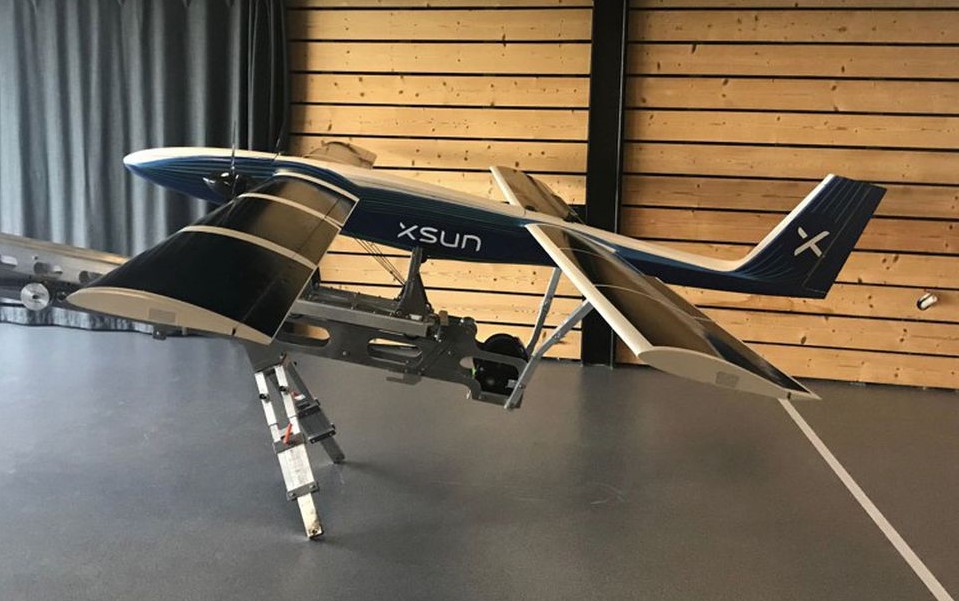XSun
The French start-up XSun wants to design the second generation of its autonomous solarpowered drone SolarXOne to improve its performance. Accelerated by the 3DEXPERIENCE Lab, XSun is using the 3DEXPERIENCE platform on the cloud to enable its teams to effectively design, simulate and test its drone, thanks to the Reinvent the Sky solution.
3DEXPERIENCE enables us to design and consolidate all our data on a single platform, to keep a unique, clear and clean configuration of all the subsystems.
Autonomous and sustainable
Whether it’s a matter of flying range, flight speed or cruising altitude, technical progress combined with initiatives of innovative pioneers have pushed aviation boundaries over the years. Among these limits, endurance raises challenges for both researchers and aircraft designers.
For Benjamin David, founder of the start-up XSun, “The growth of the drone sector has two main obstacles: their low autonomy and safety regulations.” To meet this double challenge, he found inspiration in the aerospace sector he came from: transposing the concept of satellites to a finer altimetric scale to design an autonomous and resilient solar drone. So was born the SolarXOne project.
Powered by photovoltaic cells and monitored remotely from a ground control, SolarXOne is an effective, economical and sustainable solution. Its uniqueness: a double-support wing that increases the surface available to host photovoltaic cells and ensure optimal flight performance.

Multidisciplinary collaboration
XSun’s major challenge is to optimize a complex system and find the best compromises according to requirements in terms of structure, loads, position, and internal volume, among others. Studying these constraints is inherently transdisciplinary and requires high-performance design, digital simulation and collaboration tools. “The SolarXOne drone bundles technologies from different sciences and disciplines—design, engineering, simulation, composite, prototyping and testing—that are not necessarily used to working together,” David said.
The XSun teams work on the overall structure of the drone and its various subsystems: landing gear, propellers, batteries, fuselage, etc. “The 3DEXPERIENCE® platform enables us to design and consolidate all our data on a single location, to keep a unique, clear and clean configuration of all the subsystems,” David continued.
Andrea Viti, an aerodynamic and aerothermal engineer at XSun, uses the platform on a daily basis. “Aerodynamic excellence requires precision,” he explained. “The platform makes it possible to analyze the behavior of aerodynamic fields when a component of the drone is modified. It’s crucial to be able to simulate the drone performance as soon as the overall design is ready. With Dassault Systèmes’ solutions, we can make a modification and quickly see the impact on the global structure and the components’ placement.”
With Dassault Systèmes’ solutions, we can make a modification and quickly see the impact on the global structure and the components’ placement.
“The 3DEXPERIENCE platform is fundamental to design in a collaborative way,” he added. “Airplanes and flying machines are challenging multidisciplinary systems, and even though everyone works in their own area of expertise, every decision made affects other subsystems.” For example, designing the cooling system for SolarXOne’s printed circuit board, which manages the solar energy, involves thermal engineering, aerodynamics and placement optimization in the structure. The 3DEXPERIENCE platform enables the companies’ engineers to monitor the overall balance of the aircraft at each change.
Denis Pitance, a test engineer at XSun, confirms. “I was working on the propellers’ size and position,” he said. “At the same time, a second team was working on the shape of the new landing gear. Thanks to 3DEXPERIENCE, we realized that the landing gear was not optimally positioned with regard to the propellers. So, we were able to detect this error at an early stage and put the right constraints on the design of the landing gear.”

Connecting users
The cloud gives XSun exceptional agility. “It provides remote access to powerful design and simulation tools,” David said. “We can easily connect to the platform, even when we’re away or at a partner site, as an echo of our core concept: our machines can easily fly anywhere and in a very simple way.” Pitance agrees, “Using Dassault Systèmes’ cloud offering was an obvious choice,” he said. “I travel a lot and my office is never in the same place. Being able to access my files from anywhere is absolutely essential.”
All employees can access the platform simultaneously and continuously interact, regardless of the domain they work in or the application they use. “For us, the ability to work in the cloud is a key benefit of the 3DEXPERIENCE platform,” Viti said. “The real innovation for us is to be connected to each other. Everyone follows each other’s work, provide help, technical support or just bring a fresh perspective. What’s incredible is how easy it is to use. The cloud capabilities have made long distance, remote collaboration easier and more productive.”
Dassault Systèmes’ cloud offering was an obvious choice. I travel a lot and my office is never in the same place. Being able to access my files from anywhere is absolutely essential.
While SolarXOne’s double-support wing makes it unique, finding the right proportions was a difficult task. “At one point, it seemed easier to go back to start from scratch,” David said. “CATIA and SIMULIA helped us in this regard, as we were able to test virtually many iterations very quickly. Our current design is the result.”
“We are doing amazing design work,” Viti said. “The surface quality, aerodynamics and overall geometry of each component…everything must be perfect otherwise the aircraft won’t fly. And CATIA was perfect for that.”
Being able to virtually validate the aircraft design with realistic simulation before developing a physical product is essential. Viti mainly uses SIMULIA for dynamic fluids simulation, taking advantage of its powerful aerodynamic capabilities. He relies on SIMULIA to model diverse materials, test various cable configurations, simulate wind flows and ensure structural integrity. “It was important to have the right solutions to meet all of the multiphysics involved,” he said. “Thermal dissipation and turbulence were domains the team had to focus on. SIMULIA helped us develop the optimal design and understand how each design iteration would perform, reducing the number of physical tests needed.” Because CATIA and SIMULIA are closely integrated, the simulation models were automatically updated each time the designs were revised.

An accelerated development
XSun’s partnership with the 3DEXPERIENCE Lab has accelerated the project in several fronts. “As members of the Lab, we had access to all the platform’s features and to a community of experts,” David explained. “Through the mentoring, we improved our technical skills with a positive business impact.”
Andrea Viti admits that when the project started, he did not know the 3DEXPERIENCE platform. “The Lab got us up and running in less than three weeks,” he said. “Now, whenever we need technical support or a tip to solve an issue, the Lab steps in with its expertise.”
XSun was able to accelerate its projects and enhance its skills. “The Lab makes it possible to do everything faster because we benefit from their rich ecosystem,” Viti added. “The preliminary design of the complete aircraft took less than a year—fast for such a complex system.”
The result of this collaborative work is a flying machine entirely built of composite materials with very high efficiency photovoltaic cells encapsulated in the wings. SolarXOne weighs less than 25 kg (55 pounds) with more than 4.5 meters (14.7 feet) wingspan. It boasts a flight autonomy of 12 hours minimum, with a goal of quickly increasing that to 20 hours. “The 25 kg weight limit is crucial, because it means the machine can be operated in any country,” David explained. “This limit appears in new regulations on flying drones all over the world.”
The potential uses for drones are growing, spanning from scientific research to business opportunities to rescue operations, in agricultural zones, urban centers and everything in between. For example, these drones could facilitate earth sciences research with weather monitoring, oceanic and geological observation and air pollutants tracking. Defense and security applications include creating telecommunication relays applied to border and maritime surveillance and forest fires monitoring. Finally, in terms of business applications, these drones could be used for road transport and natural resources tracking, topographical surveys and precision agriculture.
Running an endurance race is a powerful driver for research and innovation. The scientific and technological challenges combined with multidisciplinary collaboration and innovative solutions become the technological building blocks that made the SolarXOne drone a reality. The implementation of this new concept should ultimately lead to adaptable and reactive solutions for civil and military applications, in both the observation and telecommunications fields.

About XSun
The France-based company XSun has designed and manufactured SolarXOne, a solar drone system that is autonomous and energy-independent for 100% automated missions in diverse areas such as environment and civil safety, infrastructures and networks, precision agriculture, maritime world.
More information: www.xsun.fr

About the 3DEXPERIENCE Lab
3DEXPERIENCE Lab is an innovation laboratory offering direct access to the 3DEXPERIENCE platform and providing personalized support to start-ups to encourage the creation of innovative, sustainable products and accelerate concept development.
More information https://3dexperiencelab.3ds.com



